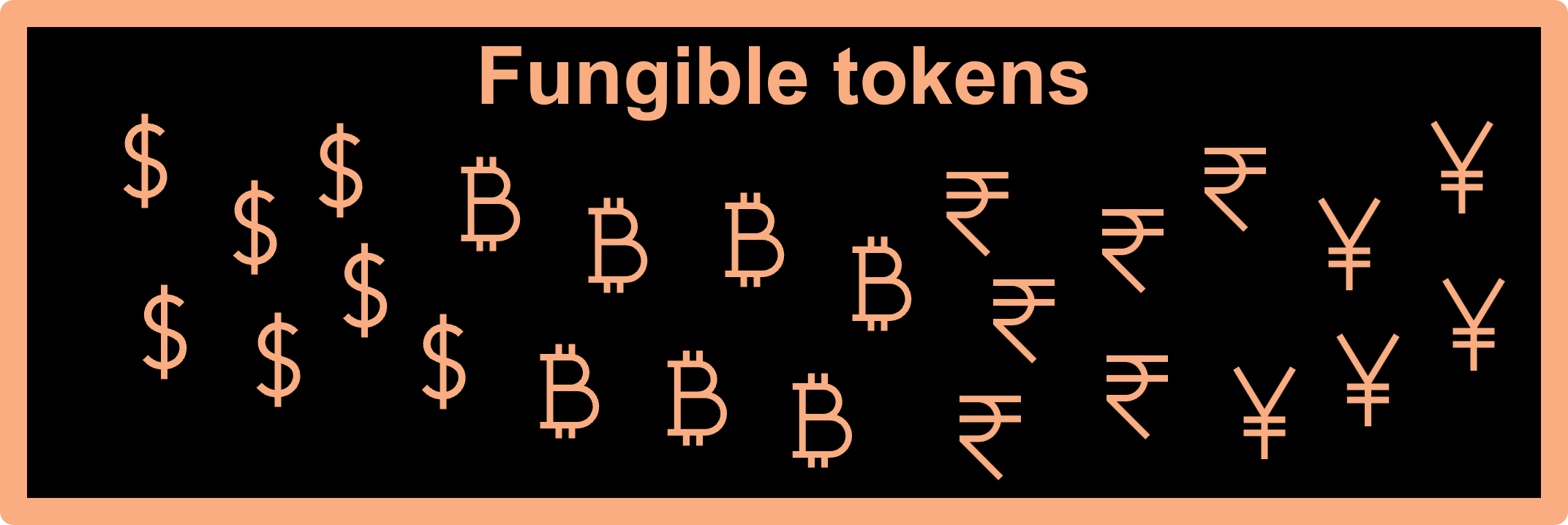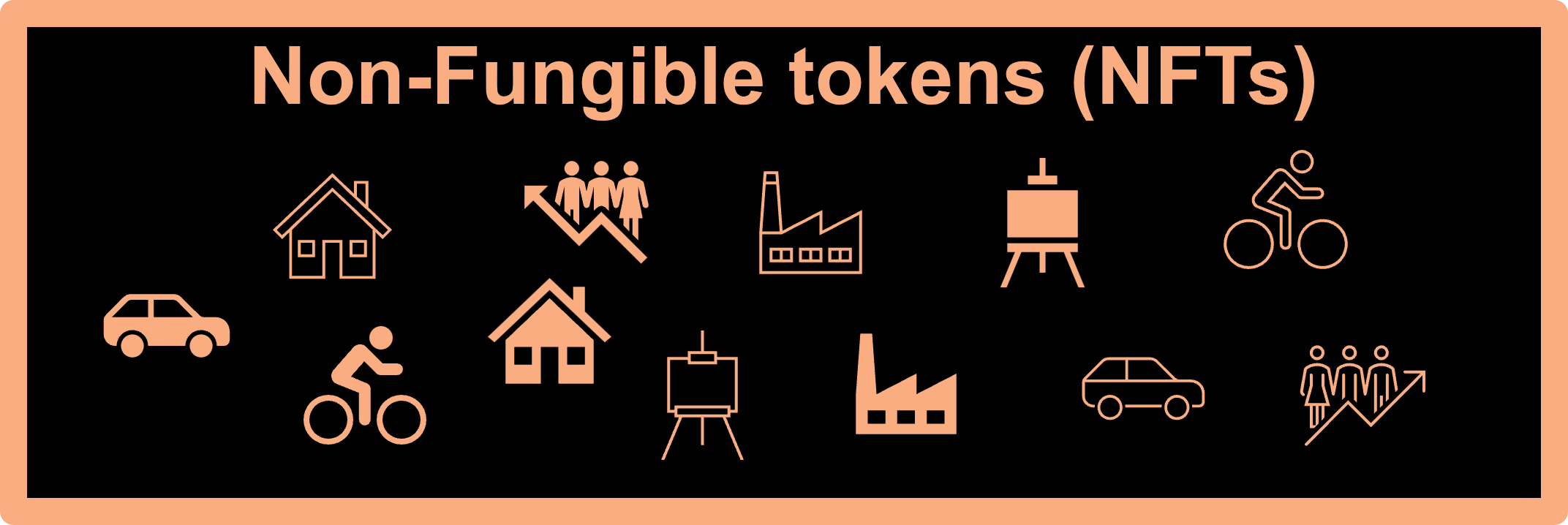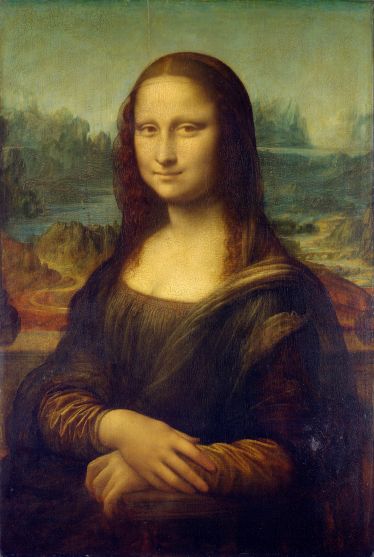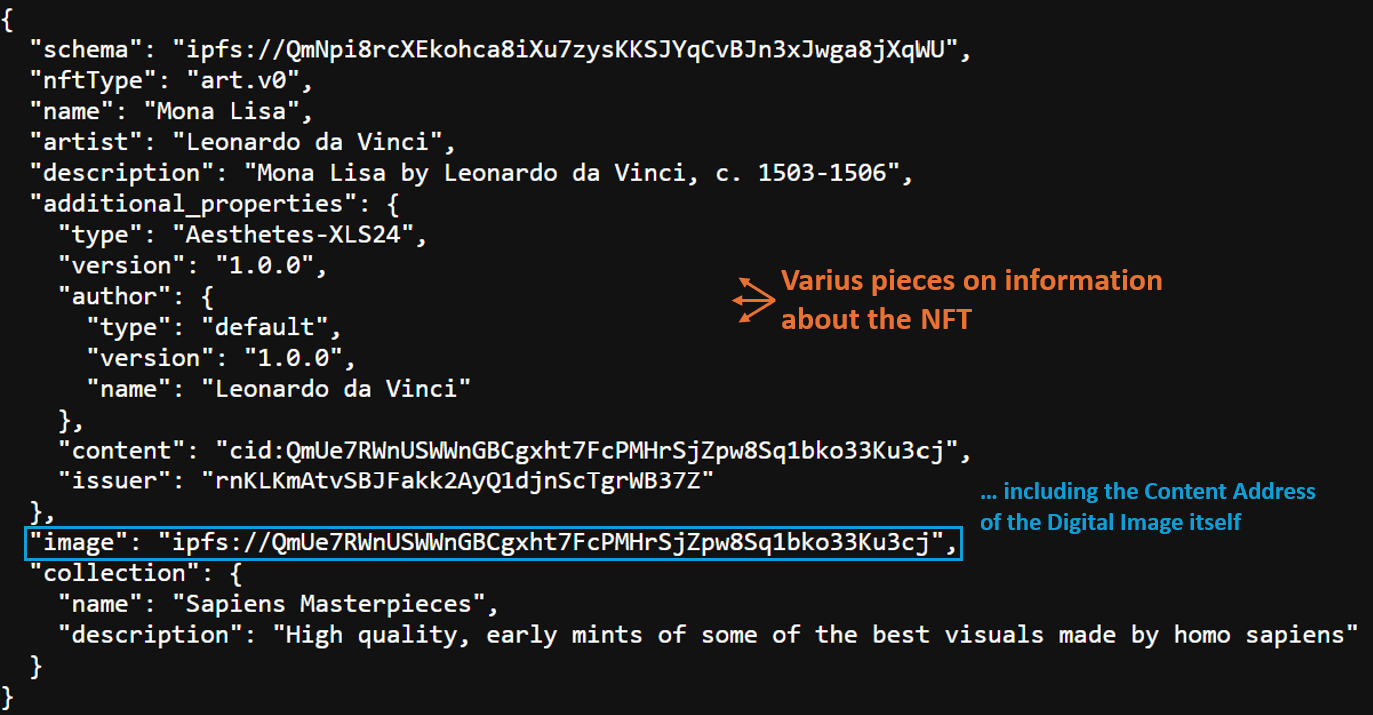Welcome to Education
This section is divided into two parts.
The Overview
If you're unsure what cryptocurrency and NFTs actually are, or want a clear explanation to share with someone from a less technical background, we recommend starting here. It's a concise (as much as it can be), plain-language overview.
The Technical Stuff
For those looking to dive deeper, this part offers a more detailed understanding of NFTs, with a particular focus on how Sapiens Masterpieces NFTs are issued and function on the XRP Ledger.
The Overview
I. Crypto
What is it actually
Cryptocurrency is just records in a database. We call these records transactions. If you add up all the transactions associated with a certain address (which usually represents a person), you get how much crypto they have. Like 1, or 3,471, or 0.231. So far so good.
What is so special about it
Three things, all to do with the fact that this is a special kind of database. We refer to such a database as a blockchain. You will see why just below.
Unlike a Word document where you can edit text freely, once data is added to this database, it's locked in using cryptography.
You can't go back and tamper with it, it is engraved in the strongest possible meaning of the word. This is a huge deal, we didn't have this before.
Every new record is added in sequence, and each one is cryptographically linked to the previous one. This is why it's called a blockchain, its blocks (i.e. batches of transactions) in a chain (i.e. cryptographically linked together) that can only grow.
It's an ever-growing history of verified transactions. The last point clarifies what "verified" stands for in this context.
Before anything gets added, it must be validated by the network. This means the system checks it's valid and not fraudulent. Kind of like being audited, but built into the live, operating system itself. This happens as a natural part of adding new transactions to the blockchain.
No single person or institution is supposed to have significant control over this activity: if indeed no party has significant control, we call the blockchain "decentralised".
Why is this a particularly good thing
We currently pay significant costs for auditing systems after the relevant data entered into them. With blockchain, audit happens at the same time as data entering the system, making it much cheaper and more efficient.
...one more thing
When it comes to cryptocurrency, 1.4 of it or 3.9 of it is worth just the same as other records adding up to 1.4 and 3.9 records, respectively. They are interchangebale, one is just the same as the other (like with regular money). In other words, they are "Fungible". This becomes important when attempting to understand NFTs or "Non-Fungible Tokens".

II. NFTs
NFTs (Non-Fungible Tokens), like cryptocurrencies (which are Fungible Tokens), are records in a database and that database is a blockchain. This is where the similarity ends. Let's articulate as best we can the difference between them.
This means that some things are fungible, and the cryptocurrency on a blockchain is exactly that. One unit of the cryptocurrency is the same as any other unit of the same kind. Just like with money. If you ask me for two dollars, I can hand you any two dollars from my wallet. You don't care which specific ones you get. That's what it means to be fungible: interchangeable, with no unique identity. Cryptocurrencies and money are both clear examples of fungible things.
NFTs, on the other hand, are non-fungible. That means one is not the same as another, each one is distinct. This is just like real-world assets. A car is not the same as a house, and a house is not the same as a share in a company. Each item has its own features, condition, and value. That's what makes it non-fungible. You can't just swap one for another as if they were identical.
NFTs work the same way: they're unique, but they can still be priced, bought, and sold using fungible currency. Real cash, digital cash on your banking app or cash that exists within and ongoing, "always-on" framework of having a network of unrelated computers recording transactions in blocks. They would then link (chain) them together using cryptography, so that changing anything about them is virtually impossible. In other words, they exists in a blockchain.
There are many blockchains, but one of the fastest, most efficient and arguably the most suited for a wide range of applications is the XRP Ledger, where Sapiens Masterpices NFTs live.

The Technical Stuff
Technical details of Sapiens Masterpieces NFTs
Sapiens Masterpieces NFTs are immutable records on the XRP Ledger (XRPL), serving as proof of ownership of a specific address. However, this address is not a typical web address. It's a Content Address, which is a string of letters and numbers that is unique to the exact digital file it represents.
For example, for the Mona Lisa, or more precisely for a high-quality, faithful digital representation of the Mona Lisa, the Content Address is:
"QmUe7RWnUSWWnGBCgxht7FcPMHrSjZpw8Sq1bko33Ku3cj".
The Content Address of the above digital image:
QmUe7RWnUSWWnGBCgxht7FcPMHrSjZpw8Sq1bko33Ku3cj
Think of this Content Address as an identifier generated directly from the digital file’s "DNA". Just as no two individuals share the same DNA, no two digital files share the same Content Address.
Every digital file is ultimately just a sequence of zeros and ones. The Content Address above is a compact, 46-character hash derived from that exact sequence, uniquely tied to the digital file's binary structure, or in this case, to the binary structure of a High-Quality, faithful representation of the Mona Lisa. In the case of Sapiens Masterpieces NFTs, the first high-quality one ever to be uploaded to the XRPL.
Even though this sequence is a random-looking sequence of characters and not the digital image itself (clearly), no other file has this sequence. This is why, if you claim ownership over this sequence of characters, it is equivalent of claiming ownership of the file it represents. The sequence is just a different form of the digital image.
You can use this Content Address directly to retrive the corresponding digital image via the InterPlanetary File System (IPFS), a decentralized protocol for an always-on hosting of the actual digital files, collectively across a collection of computers. This can be done by following a link that serves files from the IPFS network. In this example, this is such a link: https://ipfs.filebase.io/ipfs/QmUe7RWnUSWWnGBCgxht7FcPMHrSjZpw8Sq1bko33Ku3cj
So far so good, but technically this is not the Content Address that a Sapiens Masterpieces NFT (or an NFT in general) claims ownership of, there is one more step to do. We would like an NFT to also contain information about the digital image such as its name, description, the collection it is part of or if it has any attributes.
Therefore, the Content Address that the NFT is an immutable proof of ownership of is something called the The NFT Metadata. The NFT Metadata does include the Content Address of The Digital Image, but it also includes other information about the NFT.
Let's see this, in the case of the Mona Lisa.
...and the Content Address of this digital file:
QmPyqmffL7TzKmtLTxRfAAXNPp47hNLPKsRnvyhS7YBYJX
This is the file whose ownership is ultimately "engraved". This contains the NFT's name, description, issuer (Sapiens Masterpieces), collection as well as the Content Address of the associated Digital Image.
Lastly, let's have a look at how the actual record on the XRPL looks like. The actual "engraving" if you will, the NFT.
Voilà, click on the image to see this on the XRP Ledger, showing the address of the current owner of the Mona Lisa by Sapiens Masterpices.


